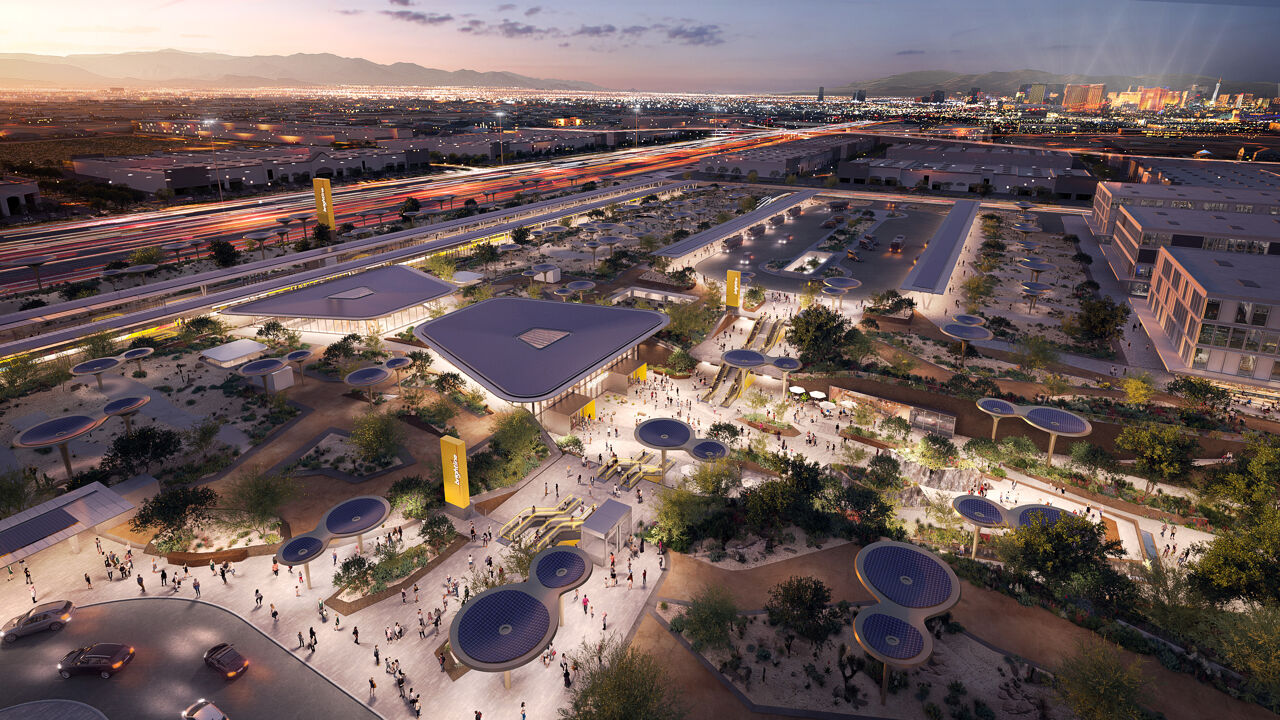Construction of the first high-speed line in the United States has officially begun at the future site of a station near the famous Las Vegas Strip. US Transportation Secretary Pete Buttigieg assured attendees that “it's really happening this time.”
The Bright Line West high-speed train is supposed to reach a speed of about 300 kilometers per hour, cutting the travel time between Las Vegas and Los Angeles in half, from about 4 hours to 2 hours. To this end, approximately 315 kilometers of train track will be constructed midway through I-15, between Las Vegas and Rancho Cucamonga in Southern California.
People have been dreaming of high-speed trains in America for decades
Stops are scheduled at Apple Valley and Hesperia in Victor Valley, an area in the Mojave Desert. From Rancho Cucamonga, passengers can then transfer to the Regional Line to downtown Los Angeles. The total cost of the project is about $12 billion (11.2 billion euros) and everything should be ready for the 2028 Summer Olympics in Los Angeles.
“People have been dreaming of high-speed rail in America for decades,” Buttigieg said. According to the Minister of Transport, the project will create thousands of job opportunities, boost the local economy and traffic, and reduce air pollution.
Brightline, the company behind the high-speed train
The company behind the high-speed train is Brightline, founded in 2012 under the name All Aboard Florida. It is a subsidiary of Florida East Coast Industries, Florida's oldest and largest commercial real estate, transportation and infrastructure holding company.
The company had ambitious plans to create an intercity high-speed train between Miami and Orlando, Florida. A plan that many found unrealistic, but it became a reality in 2018. How? Instead of relying entirely on government funding, it turned primarily to private investors.
In 2015, the name was changed to Brightline, and since then the mission has been to “connect cities across distances too short to fly but too far to drive.” In 2018, Brightline acquired XpressWest, a private company that wanted to build a rail line between Las Vegas and Southern California.
Brightline has also appealed for private financing to build this train line. Private bonds and equity will cover most of the costs. Of the $12 billion, only $3.75 billion comes from the government. It is not unimportant that the project has the support of both Republicans and Democrats in both Nevada and California.
Why do Americans have to wait so long for a high-speed train?
The first railroads in the United States were built nearly 200 years ago, and the train network has become one of the most advanced in the world. But with the rise of the American automobile and aviation industries, railroads declined.
Today, the railway infrastructure in many places is too old to accommodate high-speed trains, and passenger and freight trains use the same tracks. But access to land and capital is often difficult.
The station is in Las Vegas, near the Las Vegas Strip where the famous hotels and casinos are located.
Photo: Bright Star West
The United States has a few bullet trains today, such as the Amtrak Acela trains between Boston, New York and Washington, with a maximum speed of 241 kilometers per hour, and the Brightline trains between Miami and Orlando in Florida, with a maximum speed of 209 kilometers per hour. per hour per hour.
But to talk about high-speed train, the International Union of Railways (UIC) stipulates a minimum speed of 250 kilometers per hour. With the construction of the train line between Las Vegas and Los Angeles, the high-speed train will already be available.
Catch up on the making?
Plans for high-speed connectivity between San Francisco and Los Angeles have also been on the table for years. But the 805-kilometre line is plagued by high costs and disputes over the route.
In December 2023, the Federal Railroad Administration announced that it plans to pump $8 billion into passenger rail projects.
With the realization of “bullet” train connectivity between Miami and Orlando and future high-speed connections between Las Vegas and Los Angeles and San Francisco and Los Angeles, the United States appears to be catching up on high-speed trains.

“Coffee buff. Twitter fanatic. Tv practitioner. Social media advocate. Pop culture ninja.”









More Stories
SpaceX launches Falcon 9 again after launch failure, sensors investigated – IT – News
Telenet Again Loses Tens of Thousands of Customers in Q4 Due to ‘Cord Outage’ – IT Pro – News
Belgian businessman saves Flemish stores from collapsing fashion chain Scotch & Soda